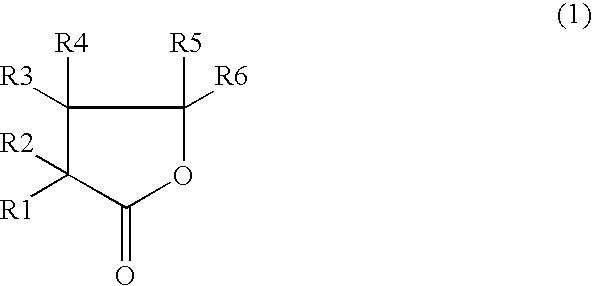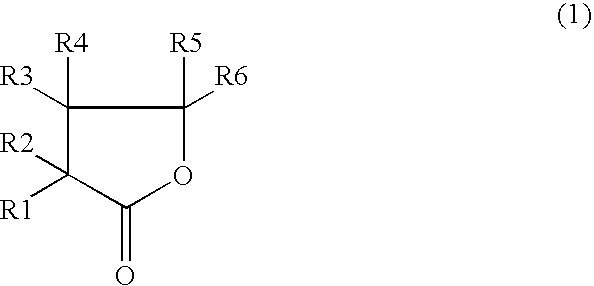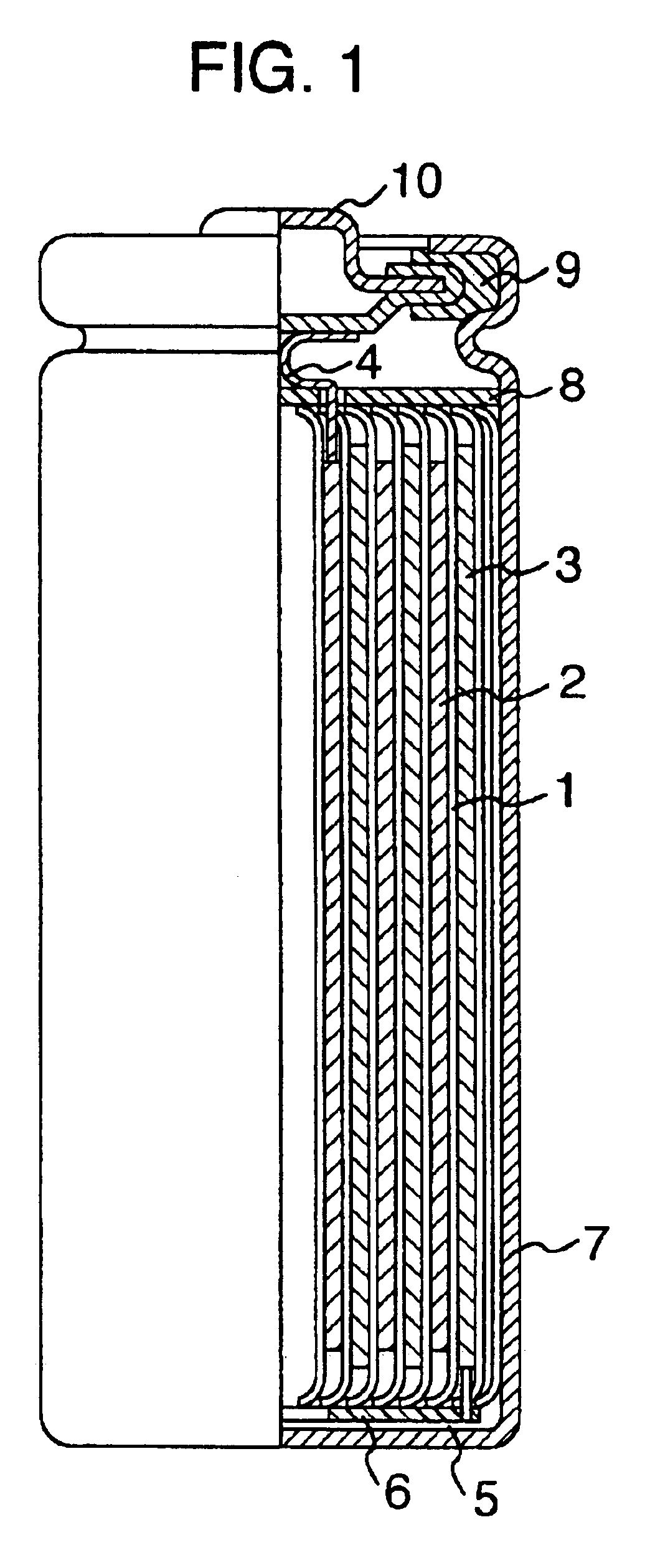Nonaqueous electrolyte secondary cell
a secondary cell, non-aqueous electrolyte technology, applied in the direction of non-aqueous electrolyte cells, cell components, electrochemical generators, etc., can solve the problems of pc decomposition with graphite, insufficient low-temperature characteristics, and inability to ensure low-temperature characteristics, so as to improve the low-temperature characteristics, the effect of excellent charging and discharging characteristics and high conductivity
- Summary
- Abstract
- Description
- Claims
- Application Information
AI Technical Summary
Benefits of technology
Problems solved by technology
Method used
Image
Examples
example 1
The above battery was made using as a solvent for the non-aqueous electrolyte a solvent prepared by adding 5 vol % of vinylene carbonate (VC) to .gamma.-butyrolactone (GBL). The resulting battery is referred to as battery 1 of the present invention.
example 2
The batteries using the electrolytes shown in Table 2 were compared on discharging characteristics in a low-temperature environment. The test conditions were as follows. As for charging, constant current and constant voltage charging was carried out at a maximum current of 1050 mA for 2.5 hours with setting the upper limit voltage at 4.2 V at an environmental temperature of 20.degree. C. As for discharging, constant current discharging of these batteries in charged state was carried out at a cut-off potential of discharge of 3.0 V and a discharging current of 1500 mA and at environmental temperatures of 20.degree. C. and -20.degree. C. The ratio of a discharge capacity at -20.degree. C. to a discharge capacity at 20+ C. is referred to as capacity retention rate in a low-temperature environment. The capacity retention rates of the batteries using various electrolytes are shown in Table 2.
When EC was used alone as the solvent for electrolyte, the electrolyte was high in freezing point...
example 3
It can be seen from the above results that low-temperature characteristics are remarkably improved by adding a cyclic carbonic acid ester having carbon-carbon unsaturated bond to a cyclic carboxylic acid ester. However, since VC has a high freezing point of 22.degree. C., there is the possibility of low-temperature characteristics being deteriorated if the amount of VC added is too much. Therefore, an investigation was made on the mixing ratio of VC. GBL was used as the cyclic carboxylic acid ester, and discharge characteristics in low-temperature environment were compared with changing the amount of VC added. Test conditions were as follows. As for charging, constant current and constant voltage charging was carried out at a maximum current of 1050 mA for 2.5 hours with setting the upper limit voltage at 4.2 V at an environmental temperature of 20.degree. C. As for discharging, constant current discharging of these batteries in the charged state was carried out at a cut-off potenti...
PUM
 Login to View More
Login to View More Abstract
Description
Claims
Application Information
 Login to View More
Login to View More - R&D
- Intellectual Property
- Life Sciences
- Materials
- Tech Scout
- Unparalleled Data Quality
- Higher Quality Content
- 60% Fewer Hallucinations
Browse by: Latest US Patents, China's latest patents, Technical Efficacy Thesaurus, Application Domain, Technology Topic, Popular Technical Reports.
© 2025 PatSnap. All rights reserved.Legal|Privacy policy|Modern Slavery Act Transparency Statement|Sitemap|About US| Contact US: help@patsnap.com



